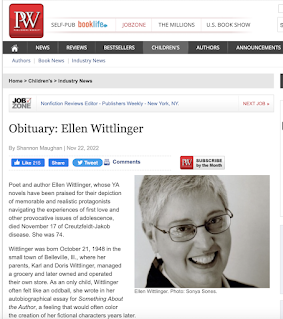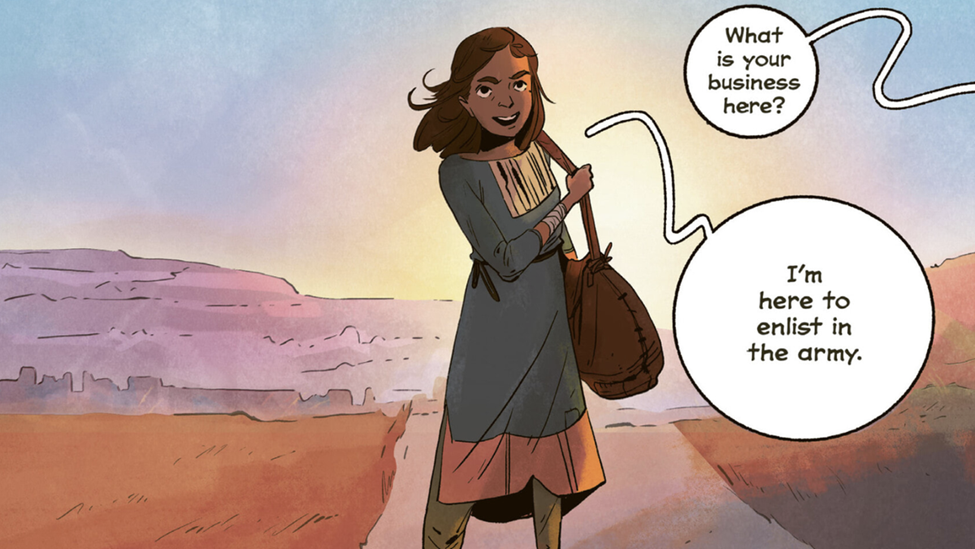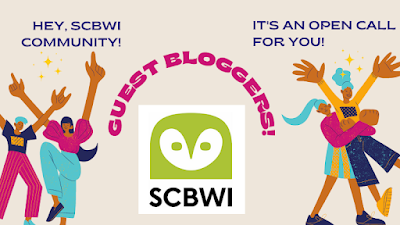Tuesday, November 29, 2022
Remembering Author Ellen Wittlinger
Thursday, November 24, 2022
The Hunt for a Twitter Replacement
The recent acquirement of Twitter by Elon Musk has set off a chain of chaos and uncertainty for the platform, leaving many scrambling for ways to maintain their industry connections and bases online without it. In the past few years, Twitter has become a center for communities in publishing, comics, and other creative fields. It’s been a place for writers and artists to get their work in front of editors and agents outside of conventions, for collaborators to meet, and for creators to share their art. It’s also been home to numerous pitching events, many of which specifically aim to spotlight diverse creators and bring diverse voices into publishing, such as #DVPit, PitMad, #LatinxPitch, and APIpit. The uncertainty in the past few weeks has threatened all of that work and community.
To be clear, it’s unlikely that Twitter is going anywhere in the very near future. Sites like MySpace are still around, despite no longer being the dominant online space, and it’s likely that even if Twitter falls off it’ll continue to persist in some fashion for a while yet. Hopefully that helps relieve some related anxiety!
That said, creators have been looking for alternatives to reconnect and establish bases in the event of a Twitter shutdown. Discord has been used by many long before this to host and join communities. You can join and create private servers with invites from friends, or you can look for and join public servers. You can find some semi-public servers as well, as some professionals in comics and art have created servers to host industry chatter. Some pitching events such as APIpit already have their own discord servers. It doesn’t have the discoverability of Twitter or the equivalent of events, but it can be a good way to keep up with industry friends and share resources.
Tumblr has also seen a resurgence in the uncertainty surrounding Twitter. Tumblr downloads were up as high as 60% last week. Tumblr benefits from being a preexisting website and large social media platform, as well as having a robust tagging system, but it’s historically been a predominantly fandom driven site. There have been writers and artists that have gotten their starts and been discovered on Tumblr in its hey-day, but it remains to be seen if the industry will follow users back as well.
Two recent contenders that have proposed as Twitter alternatives have been Mastodon and Hive Social. Mastodon is a network of serves that is meant to look and function similar to Twitter. It’s seen hundreds of thousands of users sign up in the last few weeks, but its decentralized format has led to some confusion (users sign up for a single server, but then can interact with other users through Mastodon). There are frequently boosted posts to explain how the app works.
Hive Social is another app that’s been around since 2019, but has also seen an incredible boost the last few weeks, reaching a million users a few days ago. It’s formatted similarly to Twitter and appears relatively intuitive, but it currently doesn’t have a web app, and has experienced some crashes with its sudden influx of users.
Only time will tell how Twitter will fare in these coming months, and if any of the proposed alternatives will be able to keep up the momentum and become a social media staple. What is sure, however, is that the publishing industry and community isn’t going anywhere fast.

Cindy Harris (she/they) is a Mexican American comics artist and illustrator that works in the publishing industry. She has worked as a letterer, editor, illustrator, and writer, and loves stories about identity, relationships, and growth.
Tuesday, November 22, 2022
The New York Times/New York Public Library Best Illustrated Picture Books of 2022
Every year since 1952 the New York Times has put together a panel of judges to look at all the illustrated children's books to celebrate the ten best. This year, in conjunction with the New York Public Library, the judges were were children's book author Emily Jenkins; New York Public Library Children's Librarian Maggie Craig; and illustrator Raúl Colón, who has won this award twice.
The 2022 winners are:
FARMHOUSE
Written and illustrated by Sophie Blackall
YELLOW DOG BLUES
Written by Alice Faye Duncan. Illustrated by Chris Raschka
NIGHT LUNCH
Written by Eric Fan. Illustrated by Dena Seiferling
TELLING STORIES WRONG
Written by Gianni Rodari. Illustrated by Beatrice Alemagna. Translated from the Italian by Antony Shugaar
BEDTIME FOR BO
Written by Kjersti Annesdatter Skomsvold. Illustrated by Mari Kanstad Johnsen. Translated from the Norwegian by Kari Dickson
THE UPSIDE DOWN HAT
Written by Stephen Barr. Illustrated by Gracey Zhang
THE NEW ROOSTER
Written and illustrated by Rilla Alexander
THE WRITER
Written by Davide Cali. Illustrated by Monica Barengo
WHERE BUTTERFLIES FILL THE SKY
Written and illustrated by Zahra Marwan
STILL THIS LOVE GOES ON
Written by Buffy Sainte-Marie. Illustrated by Julie Flett
See more images from the winning titles here in the New York Times announcement.
Congratulations to all the winners - it certainly makes a great reading list for those of us who create illustrated works for children!
Illustrate, Translate, and Write On,
Lee
Thursday, November 17, 2022
The Goals of Lettering in Comics
Mentors have told me that the best lettering in comics is the lettering that you don’t notice. It’s the pages where the lettering blends seamlessly into the art, where the reader is immersed into the story by the lettering. Lettering is, however, often noticed when a reader is confused on the reading order, or if it’s difficult to read.
For those unaware, lettering is the name of the process of adding in the written dialogue, the speech bubbles, and sound effects. Sometimes the artist letters their own work, sometimes they draw in the bubbles and have someone else letter, or hand draw sound effects, and sometimes a letterer adds all of these parts on top of the final art file themself. It depends on the project, the team, and their process.
An example here I love is from Mamo by Sas Milledge. This page shows a conversation between characters, and the lettering guides the reader between each speaker in an S shape that also takes the reader throughout the page. When lettering, or planning for lettering as an artist, it’s good to think of ways you can use the bubbles to lead readers’ gaze, as well as the way readers would naturally read a page. For example, for English readers, one would naturally try to read left to right, top to bottom. While exceptions can be made, it’s important to do those intentionally, and to make sure that the page is clear with that in mind.
When it comes to accessibility, font and size can come into play here. Here I have a test panel I did as a student. While I loved the font (and still do!), I learned later that this style of ‘E,’ where it looks like a backwards 3, is particularly difficult for people with dyslexia. Most comic fonts are already dyslexia-friendly, most famously Comics Sans, but it’s important to check before putting out a book that could cause frustration, especially in children’s books.
Lettering is often a quiet part of making comics and graphic novels (if the number of times I’ve had to explain to friends and family what lettering is or how it works is anything go by, anyways), but it’s a critical part of each book production. It’s often what makes a comic, well, a comic, and is what binds the writer’s words to the visual storytelling.
Cindy Harris (she/they) is a Mexican American comics artist and illustrator that works in the publishing industry. She has worked as a letterer, editor, illustrator, and writer, and loves stories about identity, relationships, and growth.
Tuesday, November 15, 2022
Unfulfilled: Amazon and the American Retail Landscape - a Report from Civic Economics and the American Booksellers Assocation
Did you know that:
Approximately 29% of all revenue at independent bookstores immediately recirculates in the local economy. This translates to a local impact advantage of 109% that of chain competitor Barnes & Noble, and a massive 405% local impact advantage over Amazon.
or that:
Civic Economics estimates that Amazon’s displacement of retail square footage increased from 621 million square feet in 2019 to 1.1 billion square feet in 2021. We further estimate that displaced retail jobs increased from roughly 1 million in 2019 to 1.75 million in 2021, even as Amazon’s distribution facilities became less labor-intensive.
To provide a visual reference to what has been lost, this displacement is the rough equivalent of 300 Malls of America, storefronts and space that simply do not exist, replaced by vast concrete boxes and tens of thousands of vehicles streaming out of distant industrial parks.
Check out the landing page for the study at Civic Economics here. and the PDF of the report here.
As we're all consumers as well as creators, this is well-worth considering.Lee
Thursday, November 10, 2022
Exploring Identity Through Fantasy
Fantasy and fiction have long been vehicles for exploring difficult topics. The veneer of magic or elves or sci-fi tech gives a distance that makes these stories feel safer, and sometimes cathartic or even fun. There have been examples of this throughout all genres of fiction for far too long to create a comprehensive list, but a couple recent examples that I feel handle this concept deftly are Squire by Sara Alfageeh and Nadia Shammas and Witchlings by Claribel Ortega.
I had the opportunity recently to attend a panel with Sara Alfageeh, where she discussed some of the inspirations for Squire. She mentioned how the heart of the story, about a girl from conquered lands trying to become a Knight to earn full citizenship, was very much inspired by the experience of Arab and Muslim Americans in the early 2000s where there was a pressure to prove your American identity, often by joining the military. This story interrogates those pressures and those feelings and how they impacted young adults thoughtfully and beautifully through the narrative and art.
Witchlings, while about young witches using magic to solve a dangerous mystery in the town, is also about people wielding political systems as tools of oppression. There is a town hall scene that I fear many adults would shudder to recognize. It’s portrayed in a very real and approachable, if frightening, way for children, who are more likely than ever to have learned about the real-life equivalents online or through the news. That scene and this story give children language to discuss their fears and their feelings about similar topics, even if their lived experiences lack spells and witchcraft.
Personally, I can easily remember as a child loving a game that explored a community of elves under the heel of humans, struggling to maintain connections to their roots, their culture, their language. As a child of an immigrant that wasn’t taught the language, and who had few cultural peers at school outside of their immediate family, I felt so connected to these characters struggling to hold on to their identity. To hold it as worthy of preserving and of being distinct.
As an adult I can recognize now that that story didn’t always handle its analogies very well, but I still remember fondly feeling seen despite its flaws. And it allows me to consider the strengths and weaknesses of using stories like this to depict these struggles.
If your world with an oppressed people has no people of color, who is this serving? What is the use of making analogies to real world oppression only to exclude those that might seek this catharsis? Are they being used for shock value, or to shine a light on characters struggling with the mundane? Are these characters given personalities, hopes, and dreams outside of their struggles? Will the children reading these stories feel seen, or like these worlds have no place for them?
Cindy Harris (she/they) is a Mexican American comics artist and illustrator that works in the publishing industry. She has worked as a letterer, editor, illustrator, and writer, and loves stories about identity, relationships, and growth.
Tuesday, November 8, 2022
Dr. e (Elizabeth) Dulemba Tracks Picture Book Trends Over the Last Three Years
In an article for Publishers Weekly, Covid, Inclusivity, and Mindfulness: Three Years of Picture Book Trends, Dr. e Dulemba reports on spending a week reading 602 picture books that were published in 2020, 2021, and 2022, and submitted by their publishers for The Margaret Wise Brown Prize in Children’s Literature.
With the important caveat that none of us should be creating for a trend (the business of publishing is slow enough that the trend will likely be over before your newly created work could hit the market), it's pretty fascinating to see what Elizabeth uncovered. Highlights include:
"there was a remarkable increase in biographies of underrepresented people—primarily women and BIPOC."
and
"a marked increase in self-help, mindfulness, and mental wellness books in response to our more anxious generation—these topics have moved into the mainstream."
and
"Child/elder (grandparent) relationships is another longstanding theme, but the sheer number of books in this category increased remarkably—perhaps as our population ages and baby boomer numbers grow."
Check out the full article here to learn more.
Illustrate, Translate, and Write On,
Lee
Thursday, November 3, 2022
Local Comics Expos in the Comics Ecosystem
Some of the best stories and art you’ll find will be at local conventions and expos. Some are run by nonprofits, such as the Small Press Expo, while others are run by colleges and universities to give their students a chance to show off and gain experience.
These smaller shows are great opportunities to connect with small publishers, editors, artists, and writers in ways that can be difficult at larger conventions. It’s a lot easier to chat in a crowd of a few hundred instead of a few thousand! And these connections can be great to look back on when looking for people to collaborate with, or to simply find new friends in the space or authors and artists you admire.
These expos also often feature panels and demonstrations from working artists, where they can get into their process, techniques, and inspirations, and it’s easier to talk to them and ask more specific questions. These are great places to talk shop and learn more about the craft, whether you’re also a cartoonist or just want to explore the perspective.
Artist’s tabling at these smaller conventions often show off more niche and experimental work. When I recently attended MICE 2022, I saw artists showing off mixed media comics, experimenting with format, and selling limited run prints, shirts, and, in one case, home-made cat toys to go with their books! (My cat definitely approves).
As an artist tabling, you can meet your table neighbors, which can include indie publishers, learn more about your local comics and book scene, and also test the waters with your original work! Many artists I spoke to had shorter 10-20 page comics that were test-runs of long-form, one-day-to-be graphic novels. These are great ways to get eyes on your work, and to also show proof-of-concept to anyone you pitch to.
These conventions and expos are pillars in the comics industry. They’re great ways to meet peers and make friends with people with similar experiences, to learn and gain inspiration, and to get lay of the land on what’s popular and what speaks to you. Aside from that, is there really any better feeling than getting to talk to an author or artist about their work in person? Or having someone ask you to sign your zine or book?
Cindy Harris (she/they) is a comics artist and illustrator that works in the publishing industry. She has worked as a letterer, editor, illustrator, and writer, and loves stories about identity, relationships, and growth.
Tuesday, November 1, 2022
Apply to Be a Guest Blogger in 2023 Here On SCBWI: The Blog
Hi Community!
In 2023 we're going to continue with a new guest blogger every month! For all of us who create work for children and teens (authors, illustrators, translators), it's a great way to share what YOU want to share with our community.
Here's how you apply:
If you'd like to be considered for a guest blogging spot (4 posts in one month), you're welcome to email me at leewind (at) roadrunner (dot) com these three things:
1) a few sentence bio of your involvement with kid lit and scbwi
2) one blog post example
3) a few additional topics you would want to address
As a reminder, posts can be about craft, business, inspiration, helpful tips, advice, interviews... and you can use video, audio, text, images... the sky's the limit, and generally posts should take about five minutes or less to consume.
Our goal is to schedule the entire 2023 year this November 2022 - so I encourage you to apply now!
Thanks!
Illustrate, Translate, and Write On,
Lee





















